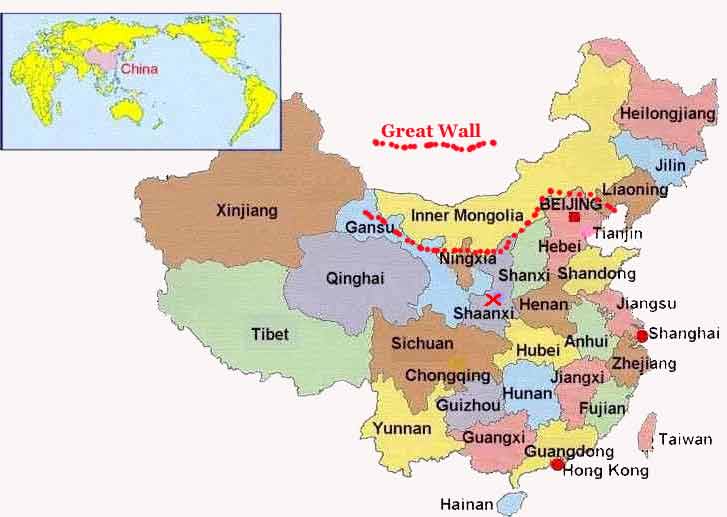|
"Wan li chang cheng" -
The Great Chinese Wall
Why was the wall built ?
No one can tell precisely
when the building of the Great Wall was started but it is popularly believed
that it originated as a military fortification against intrusion by tribes on
the borders during the earlier Zhou Dynasty. Late in the Spring and Autumn
Period (770 BC - 476 BC), the ducal states extended the defence work and built
"great" structures to prevent the attacks from other states. It was
not until the Qin Dynasty that the separate walls, constructed by the states of
Qin, Yan and Zhao kingdoms, were connected to form a defensive system on the
northern border of the country by Emperor Qin Shi Huang (also called Qin Shi
Huangdi by westerners or the First Emperor). After the emperor unified the
country in 214 BC, he ordered the construction of the wall. It took about ten
years to finish and the wall stretched from Linzhao (in the eastern part of
today's Gansu Province) in the west to Liaodong (in today's Jilin Province) in
the east. The wall not only served as a defence in the north but also symbolized
the power of the emperor.

From the Qin Dynasty onwards, Xiongnu, an ancient tribe that lived in North
China, frequently harassed the northern border of the country. During the Han
Dynasty, Emperor Wu (Han Wu Di), sent three expeditions to fight against the
Xiongnu in 127 BC, 121 BC and 119 BC. The Xiongnu were driven into the far north
of the Gobi. To maintain the safety of the Hexi Corridor (today's Gansu Province), the emperor ordered the extension of the Great Wall westward into the
Hexi Corridor and Xinjiang region. The ruins of the beacon towers and debris of
the Han Wall are still discernible in Dunhuang, Yumen and Yangguan. A recent
report shows that ruins of the Han Wall have been discovered near Lopnur in
China's Xinjiang region.
Further construction and extensions were made in the successive Northern Wei,
Northern Qi and Sui dynasties.
The present Great Wall in Beijing is mainly remains from the Ming Dynasty (1368
- 1644). During this period, bricks and granite were used when the workers laid
the foundation of the wall and sophisticated designs and passes were built in
the places of strategic importance. To strengthen the military control of the
northern frontiers, the Ming authorities divided the Great Wall into nine zones
and placed each under the control of a Zhen (garrison headquarters). The Ming
Wall starts from Yalujiang River (in today's Heilongjiang Province), via today's
Liaoning, Hebei, Inner Mongolia, Shanxi, Shaanxi, Ningxia provinces, to
Guansu.
The total length reaches 12,700 li (over 5,000 kilometers). The Shanhaiguan Pass
and the Jiayuguan Pass are two well-preserved passes at either end.
Touristic
Today, the Wall has become a must-see for every visitor to China. Few can help
saying 'Wow!' when they stand on top of a beacon tower and look at this giant
dragon. For centuries, the wall served succeeding dynasties as an efficient
military defence. However, it was only when a dynasty had weakened from within
that invaders from the north were able to advance and conquer. Both the Mongols
(Yuan Dynasty, 1271-1368) and the Manchurians (Qing Dynasty, 1644-1911) were
able take power because of weakness of the government and poverty of the people
but never due to any possibility of weakness of the Wall.
>
Pictures
> Back to Menu
|
